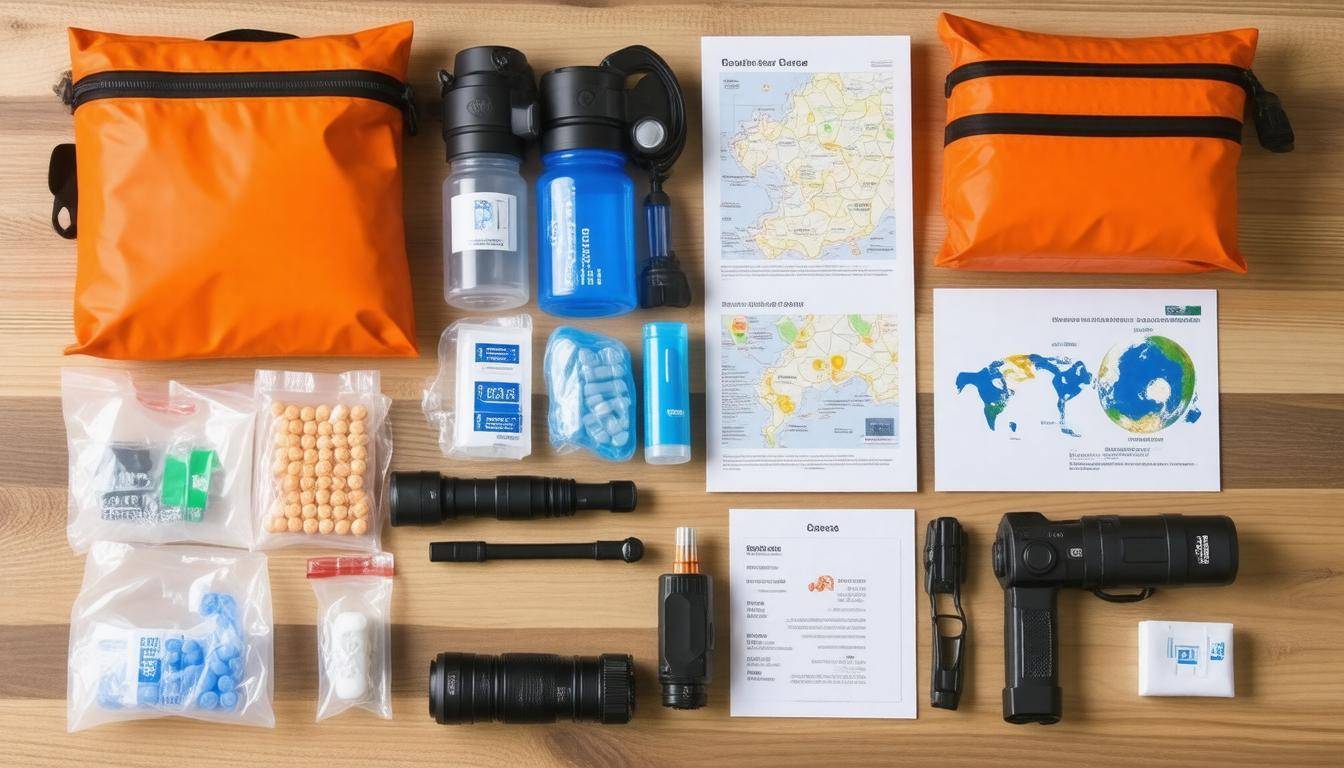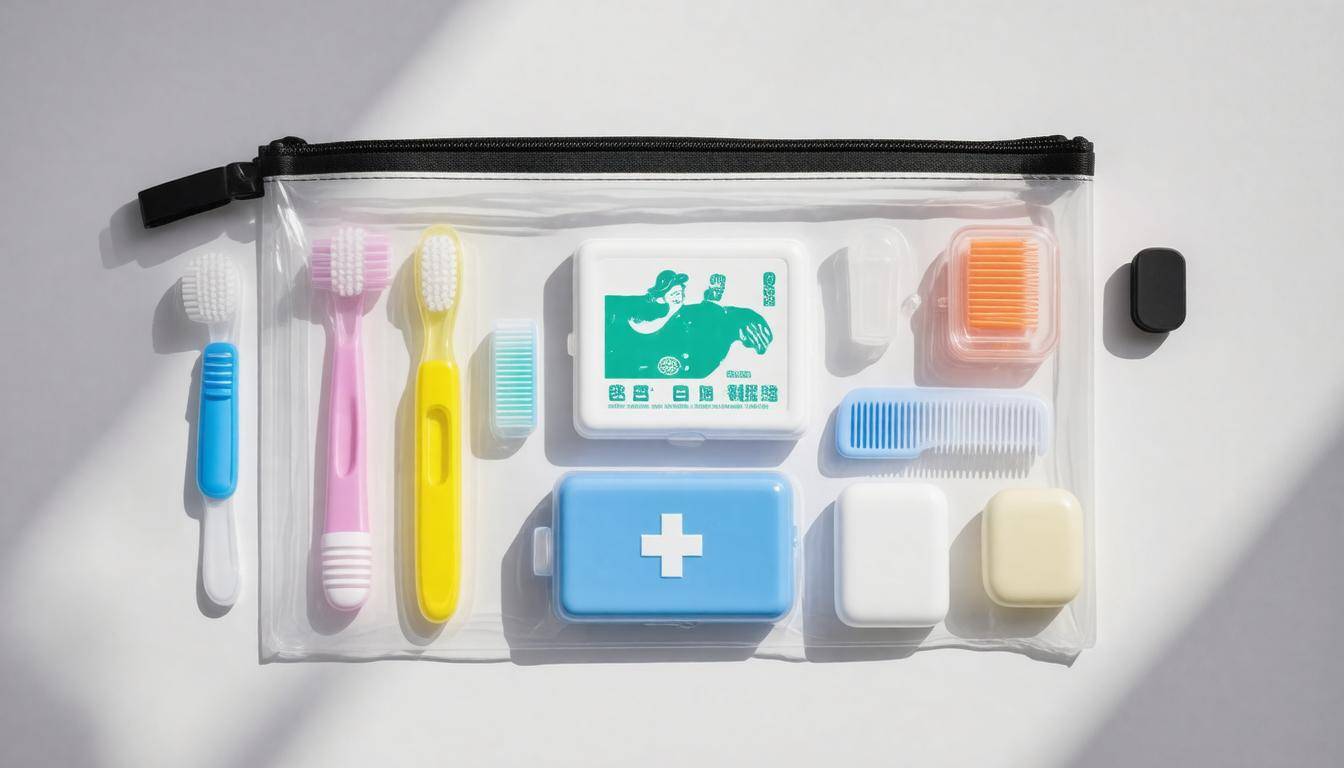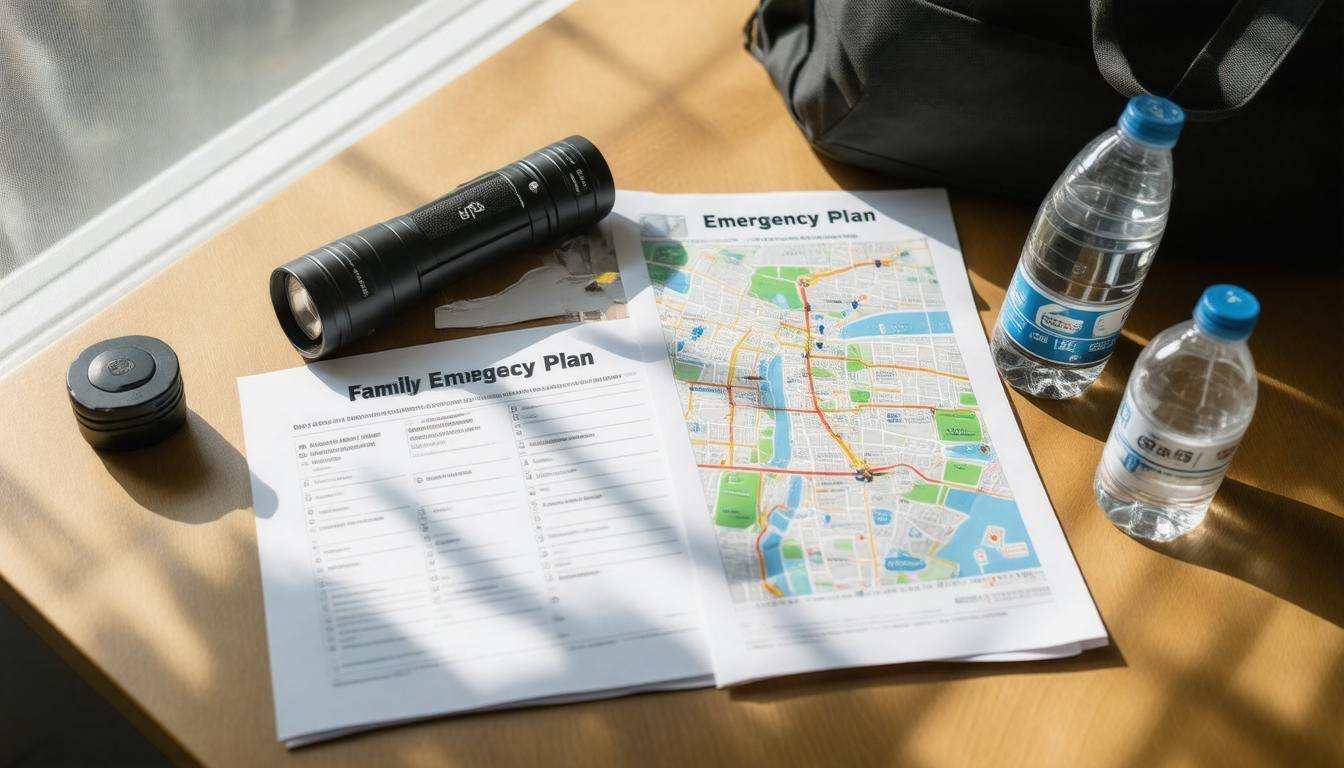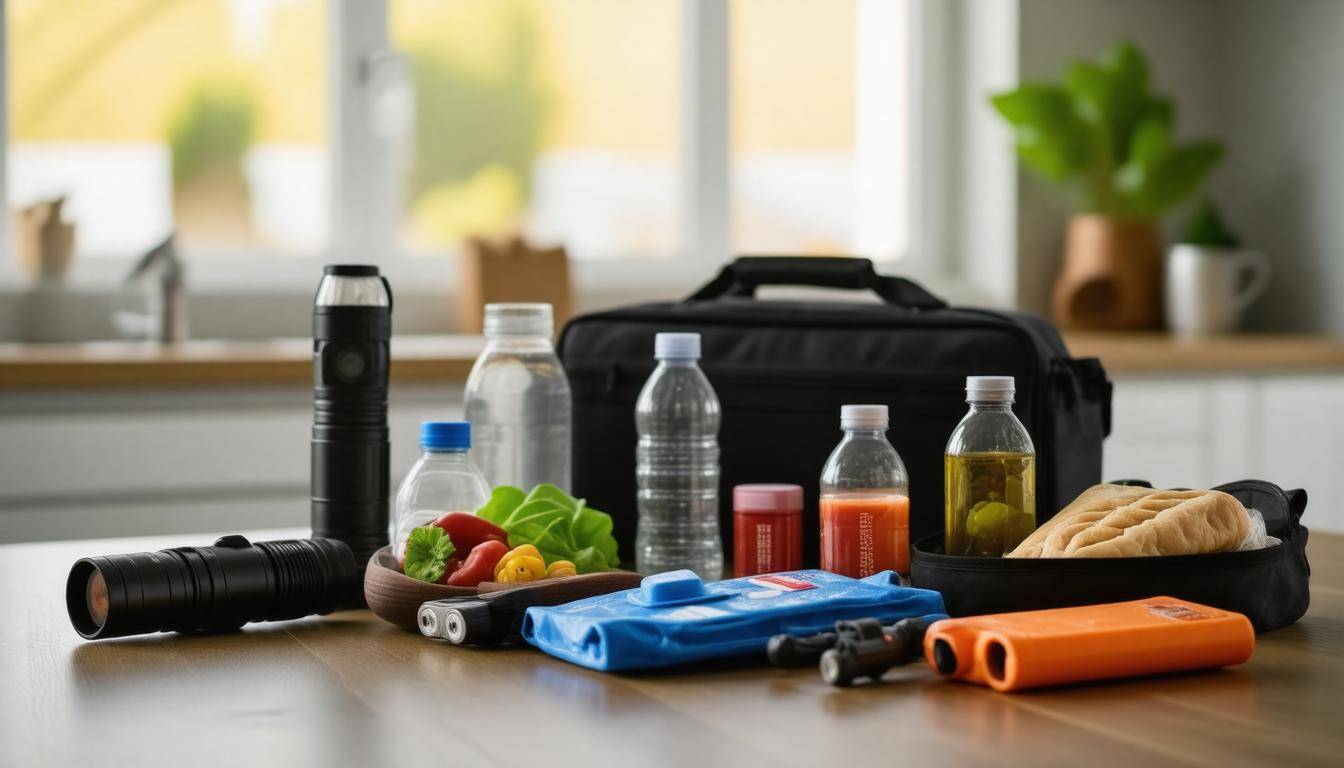When disaster strikes, being prepared can make all the difference. Earthquakes and tsunamis can come without warning, leaving people scrambling for safety. So, what do you need to survive those first crucial days? Packing an earthquake and tsunami preparedness kit isn’t just about having stuff; it’s about giving yourself peace of mind. I’ve spent time researching what truly matters in these situations, focusing on items that will help you stay safe and comfortable during chaos. From food and water to communication tools, this guide will help you create an emergency kit tailored for your needs—because when every second counts, being ready is key.
An earthquake and tsunami preparedness kit should include at least two days’ worth of food and water, first aid supplies, a flashlight with extra batteries, a portable phone charger, and non-perishable food items. Additionally, don’t forget to pack important medications, personal hygiene items, and communication tools such as a battery-operated radio to stay informed during emergencies.

The Basics of an Emergency Kit
An emergency kit is more than just a collection of items; it’s your lifeline when disaster strikes. When crafting your kit, think about what you’ll need to sustain yourself and your family during the first days after an earthquake or tsunami. You want to ensure that everything is practical and accessible, so make it a point to regularly check and replenish supplies.
Essential Components
Your basic emergency kit should include:
-
Non-perishable food for at least 72 hours. Consider easy-to-open canned goods, energy bars, and dried fruits that require little preparation.
-
Water, at least one gallon per person per day for three days, as hydration is crucial in emergencies.
-
First aid kit stocked with bandages, antiseptics, pain relievers, and any prescription medications necessary for family members. Don’t overlook personal health needs!
-
Flashlight, ideally one per person, along with extra batteries or even a solar-powered option for light after power outages.
-
Whistle to signal for help; it’s small but incredibly effective.
-
Local maps and a compass can be invaluable if electronic devices fail.
Additionally, it’s wise to include tools such as a multi-tool or Swiss Army knife to handle various needs—these small gadgets can make a big difference in tight situations. Furthermore, hygiene items shouldn’t be neglected; pack moist towelettes, soap, and garbage bags to maintain cleanliness while living out of your kit.
Beyond the main kit, I recommend having smaller go-bags ready for each family member. This ensures that if you need to leave quickly due to danger or evacuation orders, everyone has their essentials close at hand.
Having secured the basics, let’s focus on food options that are designed for longevity and ease during stressful situations.
Long-Lasting Food Options
When choosing non-perishable food options for your emergency kit, it’s crucial to select items that not only offer long shelf lives but also deliver essential nutrients. One of the top contenders is canned meats and fish. Packed securely in their containers, they can last several years and are excellent sources of protein. Imagine biting into a tuna sandwich after a long day; it brings both sustenance and a feeling of home during uncertain times.
Another great choice, dried fruits and nuts, provide a quick energy boost without any cooking required. They’re convenient and full of fiber, making them perfect snacks to keep morale high when the going gets tough. The simple act of reaching for a handful of almonds or apricots can bring a sense of normalcy amid chaos.
For those looking to minimize prep time while maximizing calories, consider dehydrated meals such as those designed for campers. These lightweight options pack a caloric punch and only require boiling water for preparation. Picture sitting around a camp stove, enjoying a hearty meal after a day of physical exertion—it’s this kind of comfort that can really matter when other conveniences are stripped away.
Additionally, Meals Ready-to-Eat (MREs), typically used by military personnel, are another solid option for emergency kits. They come in complete serving sizes with everything you need in one package, saving space and ensuring variety in your diet. Knowing you have MREs stashed away can provide peace of mind, knowing that you’re equipped to face an emergency head-on.
| Food Item | Shelf Life | Benefits |
|---|---|---|
| Canned Tuna | 5 years | High in protein |
| Dried Apricots | 2 years | Rich in vitamins and fiber |
| MREs | 3-5 years | Complete meals ready to eat |
Now that we’ve discussed some excellent choices for non-perishable food items, it’s important to consider another essential aspect of preparedness: ensuring reliable access to safe drinking water during emergencies.
Safe Water Storage
Accessing clean water is crucial, especially during natural disasters like earthquakes when municipal supply may be compromised. To ensure that you have enough potable water on hand, it’s important to focus not only on how to gather it but also on how to store it securely. The right storage techniques and containers can make all the difference.
Practical Solutions
One ideal way to store water includes:
-
Water purification tablets: These little miracles can transform questionable water sources into drinkable supplies. Always keep a supply on hand as you might need them in an emergency, whether you’re dealing with a flood or disrupted water service.
-
Collapsible water jugs: Not only are these easy to transport, but they also don’t take up much space when empty. They are perfect for packing in your car if you need to evacuate quickly or if you’re heading out for a camping trip.
-
Water barrels: If you’re planning to hunker down at home during a disaster, having large-volume storage systems like barrels can come in handy. Typically made of food-grade plastic, these barrels can hold substantial amounts of water and fit snugly into your basement or garage.
To ensure your water remains safe for consumption over time, it’s essential to rotate your supplies regularly. As a rule of thumb, replace stored water every six months. This helps maintain freshness and prevents any build-up of contaminants. Store your water in cool, dark places since light and heat can encourage algae growth and bacteria that could spoil the water.
Keeping an inventory of your stored supplies will help you manage what you have on hand and remember when they need replacing.
Make sure you’re also storing your water in appropriate containers. Use clean, food-grade containers that are BPA-free. Avoid using bottles that have contained soda or juice since residues may alter the taste or quality of your water and potentially lead to contamination.
While clean water is vital for survival, ensuring access to safe drinking sources is just part of your larger preparedness plan; nearby resources and reliable protective gear will facilitate safety during the chaos that follows natural disasters.
Protective Clothing and Materials
Protective clothing serves as your first line of defense during disasters, shielding you from the unpredictable elements that may arise after an earthquake. As ground may shift and structures could collapse, being equipped with the right gear can make all the difference. For instance, sturdy boots are a must-have; they not only protect your feet from falling debris but also ensure stable footing on uneven terrain.
When I think back to the aftermath of natural disasters, I remember how essential it was for emergency responders to navigate through rubble with confidence, all thanks to their rugged footwear.
Another critical component in your kit should be thick gloves. They’re invaluable for both handling broken materials and ensuring that your hands are protected from sharp edges or contaminated surfaces. You wouldn’t want to risk an injury while helping yourself or others!
Similarly, dust masks play a vital role in preventing the inhalation of harmful particles that can linger in the air after a quake. Dust and debris can cause respiratory issues, especially for those with preexisting conditions. By simply wearing a mask, you’re safeguarding yourself against potential health risks.
Now let’s talk about two other items that might seem basic but play an impactful role:
- Rain ponchos are often overlooked but proving essential for staying dry during inclement weather following a quake; keeping your body heat intact is crucial.
- Thermal blankets, small and lightweight yet effective, provide warmth when temperatures drop unexpectedly. They’re easy to tuck away in your kit without taking up too much space.
Referring back to the 2020 Oaxaca earthquake truly emphasizes how these pieces of protective clothing save lives. Rescue workers donned sturdy boots and thick gloves, navigating quickly through collapsed structures. They understood that having essential protective gear was as important as possessing tools for diversion or rescue efforts themselves.
With such essentials firmly in place, it becomes easier to focus on the next steps you’ll need to take in your safety planning before establishing secure living arrangements post-disaster.
Temporary Shelter Solutions
Earthquakes and tsunamis can turn your home from a safe haven into a place of danger. In such situations, knowing how to quickly establish temporary shelter can be lifesaving. Pop-up tents, bivvy sacks, and tarps are excellent options that provide protection from the elements and a sense of security while you maneuver through the aftermath.
When it comes to setting up pop-up tents, ease is paramount. These shelters can typically be erected within minutes, making them ideal for urgent situations. Choose a tent that has a minimum size of 10×10 feet to comfortably accommodate a family. They’re designed using waterproof and wind-resistant materials, shielding you from rain or unexpected gusts.
An essential aspect of using shelter effectively lies in its location. Place your tents at least 100 feet away from potential landslide zones or flood-prone areas to avoid further disasters. This positioning protects you physically and provides peace of mind.
A survivor of the 2020 Oaxaca earthquake remarked, “Using a pop-up tent, my family had a place to stay even when our home was unsafe.” This sentiment captures the importance of immediate shelter resources in disastrous times.
Quick and Effective Shelters
While pop-up tents offer robust housing, don’t overlook bivvy sacks. These compact sleeping solutions serve as lightweight combinations of sleep gear with weather protection, perfect for individual use. If resources are limited, tarps coupled with rope allow for creative makeshift structures to emerge. Just by tying corners securely between trees or posts, you create a barrier against rain and wind—people have been known to construct these in under ten minutes when time is of the essence.
- Pop-up Tents: Easy setup and immediate shelter.
- Bivvy Sacks: Compact sleeping option, ideal for individuals evacuating quickly.
- Tarp and Rope: Versatile solutions for those needing quick cover; effective yet affordable.
Establishing an adequate temporary shelter provides not just physical cover but emotional relief during tumultuous periods marked by uncertainty. Understanding how to harness these options equips individuals with essential tools for navigating disaster recovery. As we move forward, considering medical supplies becomes equally important in addressing any injuries sustained during such catastrophes.
First Aid and Medical Supplies

When preparing for potential emergencies such as earthquakes in Oaxaca, having a well-stocked first aid kit is vital. Injuries are common during natural disasters, so ensuring you have the right supplies can make all the difference. Think of your first aid kit as an essential lifeline; it not only helps with immediate medical issues but also boosts your confidence knowing you’re ready to tackle unforeseen challenges.
Comprehensive First Aid Kit
Your first aid kit should include a variety of items tailored for quick response to potential injuries. Here are some must-haves:
-
Adhesive bandages in various sizes: They cater to cuts and abrasions of different magnitudes.
-
Sterile gauze pads and adhesive tape: Perfect for securing dressings on larger wounds or for more extensive bleeding.
-
Antibiotic ointments: These help prevent infections in minor cuts and scrapes, a critical step in managing health post-disaster when access to medical facilities could be limited.
-
Hydrogen peroxide: It’s effective for cleaning wounds, though use it meticulously to avoid skin irritation.
-
Ibuprofen or acetaminophen: Pain relief is crucial; headaches and discomfort can arise from stress and physical exertion in emergency situations.
-
Prescription medications: Remember to include any chronic medications that family members may need regularly, ensuring they’re within their expiration date.
Significantly, knowing how to utilize these supplies effectively is just as important as having them.
Attending a first aid course can deepen your understanding of basic medical techniques. Whether it’s treating a sprained ankle from slipping during an intense aftershock or recognizing the signs of shock, these skills can empower you in times of crisis. Moreover, by practicing these responses, you create a mental framework that allows you to act decisively amidst chaos.
While medical supplies are indispensable for injury management, they should be complemented with effective tools and communication resources that enhance preparedness and coordination during a disaster.
Tools and Communication Devices
In the midst of a crisis like an earthquake or tsunami, being prepared means having the right tools and reliable communication devices at your disposal. Your ability to stay informed and connected can significantly impact your safety and that of your loved ones. One of the most crucial items you can have in your emergency kit is a hand-crank radio. It’s not just a device; it’s a lifeline. This allows you to receive vital updates on weather conditions, emergency services, and evacuation notices when the power is out. The beauty of a hand-crank model is that you don’t need batteries—just a few cranks will get you the information you need to make informed decisions.
Essential Tools
Alongside your hand-crank radio, including a multi-tool or Swiss Army knife can prove invaluable. These versatile tools come equipped with everything from knives to screwdrivers, allowing you to handle numerous tasks without weighing down your pack with multiple separate items. Whether you’re cutting rope, completing a makeshift repair, or opening canned foods, having one of these tools can dramatically simplify survival efforts.
Don’t overlook the importance of maintaining phone connectivity in emergencies. A portable phone charger should be part of every emergency kit. When power outages occur during disasters, charging stations may become unavailable. By keeping a portable charger handy, you’ll ensure that your phone remains powered for crucial communication or navigation purposes.
Additionally, having a fire extinguisher on standby is fundamental for immediate threats. Fires can emerge from various sources during natural disasters; therefore, being able to manage small flames early can prevent larger catastrophes. Ensure your fire extinguisher is inspected regularly so it functions properly when needed.
If you want to take your emergency preparedness one step further, consider investing in a solar charger as well. This eco-friendly option provides an excellent way to keep your devices powered when electricity may not be available for days or even weeks after a disaster strikes.
With survival tools established, it’s equally important to focus on personal hygiene essentials to maintain health during crises.
Hygiene and Personal Items

The chaos that an earthquake can bring should not compromise your health. A well-thought-out earthquake and tsunami preparedness kit should include essential hygiene items to help you remain clean and reduce the risk of infections or diseases. Think about how difficult it can be to concentrate on managing a crisis when you feel dirty or uncomfortable; ensuring basic hygiene helps alleviate that stress, allowing you to focus on what truly matters.
Essential Hygiene Items
-
Toothbrush and toothpaste: Your oral health shouldn’t take a backseat, even in emergencies. A simple brushing routine can make you feel human again amidst the turmoil.
-
Hand sanitizer and soap: It’s important to have sanitizers with at least 60% alcohol content readily available—this is crucial for ensuring cleanliness when soap and water aren’t accessible.
-
Feminine hygiene products: Make sure you pack enough supplies based on individual needs, as these could become scarce in an emergency.
-
Wet wipes: Provide a quick and convenient solution for overall body cleaning when water supply is limited. Use them liberally; they can work wonders for your sense of cleanliness.
Alongside these necessities, it’s beneficial to address the emotional impact of an emergency situation.
Small comfort items can also play a surprisingly significant role in maintaining morale. Consider adding things like books or toys for children; these can provide emotional relief and a sense of normalcy during stressful times. For instance, having a favorite childhood storybook handy for your kids might offer them a comforting escape when everything around feels uncertain.
To protect all these valuable items from potential water damage, pack them in waterproof bags or containers. This simple move preserves your supplies and ensures every item remains usable when you need it most.
Ultimately, having adequate hygiene supplies in your earthquake and tsunami kit enhances your safety and well-being during an unpredictable crisis. By being prepared with the right essentials, you ensure that your response to the unexpected can be as effective as it is safe.
In times of crisis, preparedness isn’t just about survival; it’s about preserving dignity and health throughout the experience. Prioritizing hygiene in your emergency kit equips you to face challenges head-on with confidence.
What specific supplies are critical for survival during a tsunami following an earthquake?
Critical supplies for survival during a tsunami following an earthquake include a portable water container for hydration, non-perishable food items like energy bars or canned goods, a first aid kit for injuries, a flashlight with extra batteries for visibility, and a whistle to signal for help. According to the National Oceanic and Atmospheric Administration (NOAA), tsunamis can reach land within minutes after an earthquake, making preparedness vital—having these essentials ensures that individuals can sustain themselves while seeking higher ground or assistance.
How often should individuals review and update their earthquake and tsunami preparedness kits?
Individuals should review and update their earthquake and tsunami preparedness kits at least once a year, or whenever significant changes occur in their personal circumstances, such as moving to a new location or changes in family size. According to a FEMA report, nearly 70% of residents in high-risk areas do not have an adequate emergency kit, highlighting the importance of regular assessments to ensure supplies are current and effective. Regular updates also allow individuals to rotate food items, check for expired products, and incorporate new preparedness resources or tools that may enhance safety during an emergency.
How can residents of Oaxaca ensure their kits meet local hazards and challenges?
Residents of Oaxaca can ensure their earthquake and tsunami kits meet local hazards by conducting a thorough risk assessment of their area, which includes understanding the seismic activity and potential for tsunamis. It is crucial for residents to include essential items such as water (1 gallon per person per day), non-perishable food, a flashlight, batteries, a first aid kit, and important documents. According to the National Institute of Statistics and Geography (INEGI), Oaxaca is among the states most affected by earthquakes, making preparedness vital. Additionally, participating in community drills and accessing local resources can help fine-tune these kits to address specific challenges unique to their environment.
Are there any unique considerations for families with children or pets when preparing a kit?
Yes, families with children or pets should consider specific items for their earthquake and tsunami preparedness kits. For children, include age-appropriate comfort items, medications, snacks, and a favorite toy to help alleviate anxiety during emergencies. Statistics show that children are particularly vulnerable to stress during crises, so having familiar items can aid in their emotional stability. For pets, ensure you have food, water, leashes, and identification tags as nearly 70% of U.S. households own pets, and many mistakenly leave them behind during evacuations. Including these essentials enhances overall family safety and cohesion during emergencies.
What are the best practices for storing and maintaining an earthquake and tsunami kit?
The best practices for storing and maintaining an earthquake and tsunami kit include keeping it in a cool, dry place, regularly checking expiration dates on food and medications, and ensuring easy accessibility during emergencies. It’s recommended to review your kit at least twice a year; studies show that proactive preparedness can reduce injury risk by up to 30% during natural disasters. Additionally, clearly label your kit and educate all household members about its location and contents to enhance safety readiness.











